(Resuming the story of my vacations...) The day after we arrived in Junín de los Andes, we took a bus to the northern shore of Lake Huechulafquen, located west of the city, within the Lanín National Park. There are several buses departing from Junín to the place called Puerto Canoa, and back to Junín; we decided to follow Marita's advice and take the first one to go and the last one to return, as there's much to do in this place.
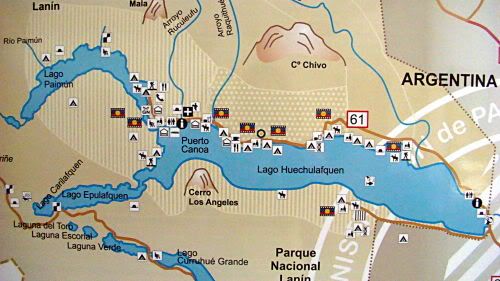
As you go west into the national park, the usually dry Patagonian landscape becomes greener. This is a Valdivian temperate rain forest. Most of this type of forest is located in Chile, but here and there it spills over the passes of the Andes into Argentina. It's noticeably more humid, with tall trees of a variety of species I can't identify, many colourful species of flowers, and moss and lichen growing everywhere.
The other thing you see as you get close to the lake is the ice-clad Lanín, almost 3,800 m high. Sometimes the sight is blocked by mountains and hills nearby, but mostly it's always there in the north, so close you feel you can touch the glaciers near its summit.
(I took dozens of pictures of it from different angles, using different camera settings. Choosing one was a problem — Lanín looks impressive in all of them, with no merit on my part. One thing of note for the photographer, in case you didn't know: when photographing snowy-topped mountains from the distance against the sky, underexpose. Otherwise the pure white of snow and its reflected light will burn off all the details. The picture above is underexposed by one full stop. This may change if you have a polarizer.)
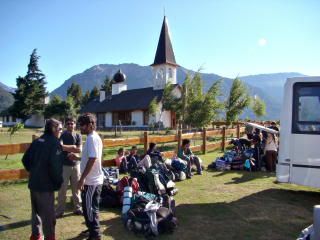 Well, the bus left us a few hundred meters after Puerto Canoa, beside a nice church in an isolated spot of intense beauty. We walked back, marveling at the scenery, until we got to the house of the park rangers. We had to pay a small fee of admittance, and we were given a few instructions and tips. There's a path that takes 4 hours to reach Lanín's base and 3 hours to return, and if you want to go that way you have to notify the park rangers and start before 11 AM; otherwise you can go anywhere as long as you don't violate the rules.
Well, the bus left us a few hundred meters after Puerto Canoa, beside a nice church in an isolated spot of intense beauty. We walked back, marveling at the scenery, until we got to the house of the park rangers. We had to pay a small fee of admittance, and we were given a few instructions and tips. There's a path that takes 4 hours to reach Lanín's base and 3 hours to return, and if you want to go that way you have to notify the park rangers and start before 11 AM; otherwise you can go anywhere as long as you don't violate the rules.There are several camping sites around the lake, which is 30 km long; some have basic facilities including a small "general store"-type shop, while others are more integrated with nature. We heard most of the place was already crowded, and some of the passengers in our bus came to do some camping as well.
We decided to follow a path that would take us to a cascade known as El Saltillo, located some 8 km away north of Lake Paimún, which communicates with Lake Huechulafquen on the west. We began around 11 AM; it took us two and a half hours to cover that distance, the last part being rather steep. The reward for our efforts was spectacular...
After watching the cascade, we came down again and had lunch — some sandwiches. Then we walked back to the lakeshore to enjoy the sight, had some mate, then took a nap in the shade. We didn't have time to try other, longer circuits around the lake, so we walked a few more kilometers and came to rest on a beach, not far from the bus stop. We waited there until it was about time to leave.
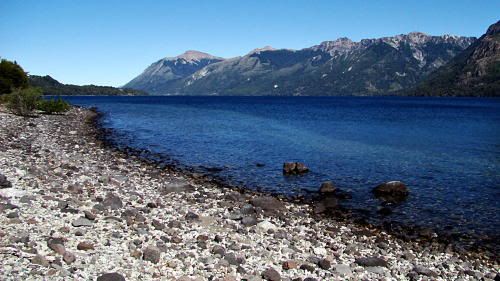
It was January 15, only the eighth day of my vacations of two-and-half weeks... so I guess I'd better hurry up before I tire my readers. The following installments will be more summarized, I promise!

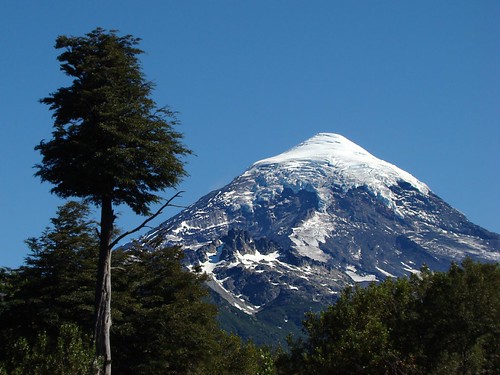
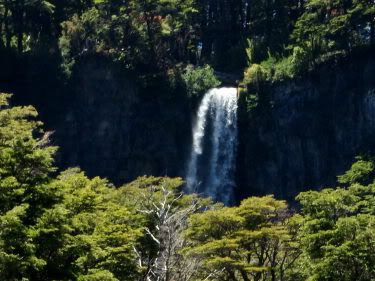
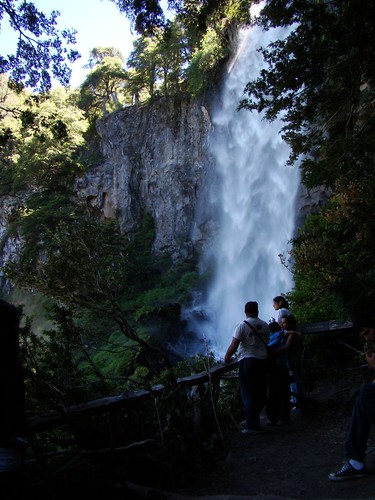












No comments:
Post a Comment
Note: Only a member of this blog may post a comment.